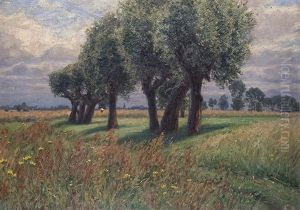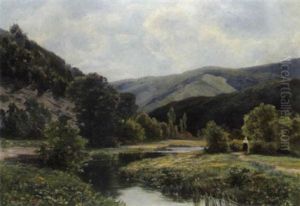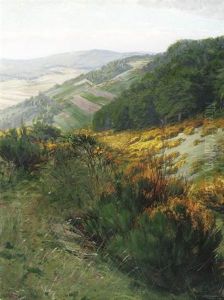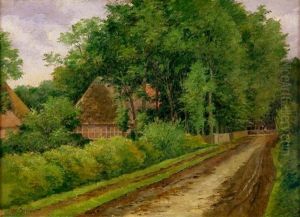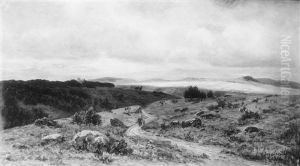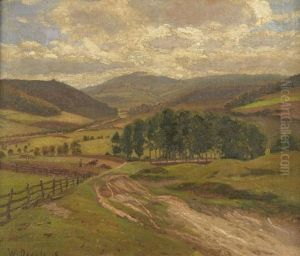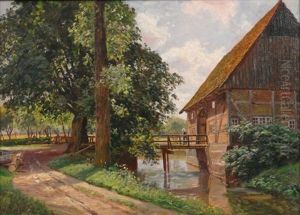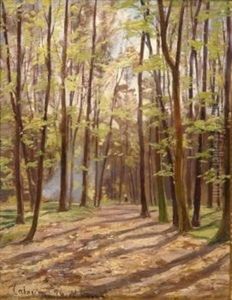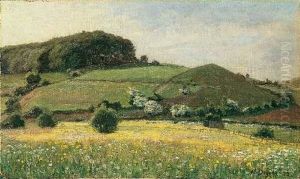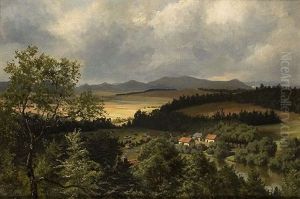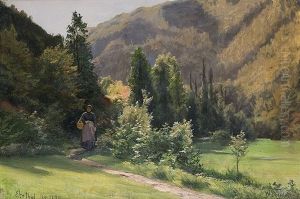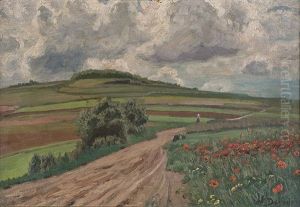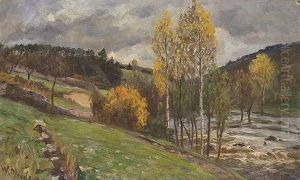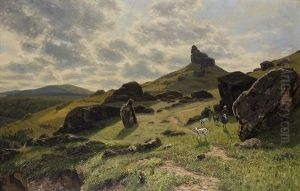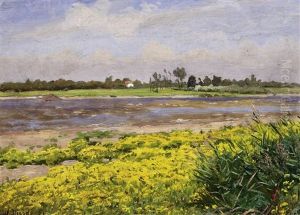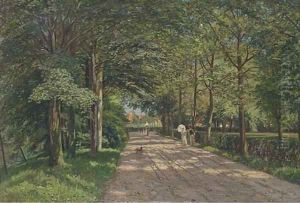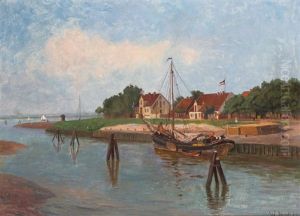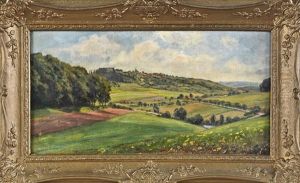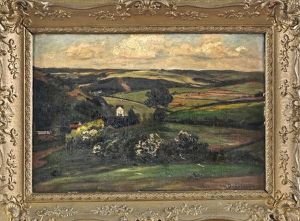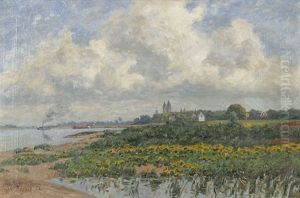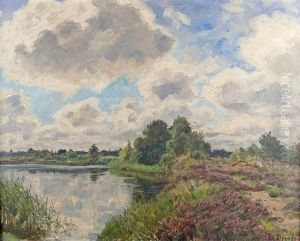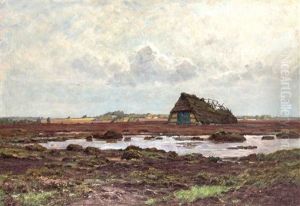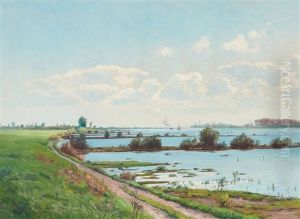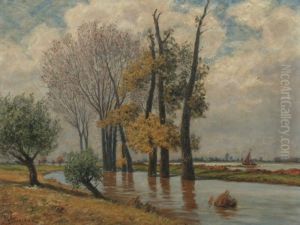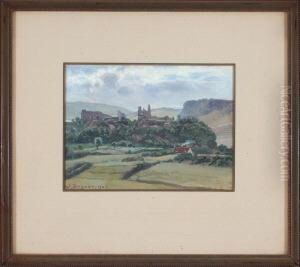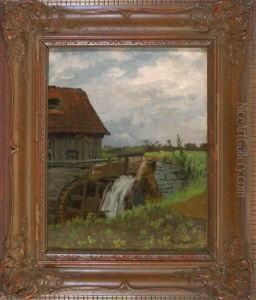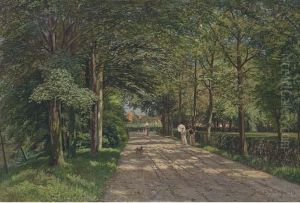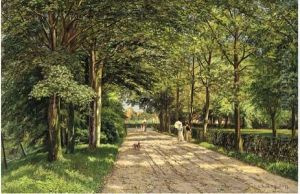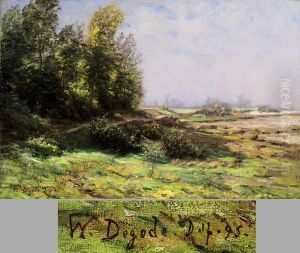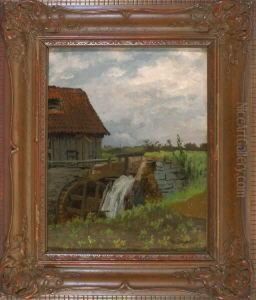Wilhelm Degode Paintings
Wilhelm Degode was a German landscape painter born on July 25, 1862, in Aachen, Germany. He was known for his impressionistic approach to painting, which was still a relatively new style during his lifetime. Degode's work was often characterized by a bright palette and a loose, expressive brushwork that captured the changing qualities of light and atmosphere in his landscapes.
Degode received his artistic training at the Düsseldorf Art Academy, which was one of the leading art schools in Germany at the time. There, he studied under notable teachers such as Eugen Dücker, who was a significant influence on his early work. Dücker was known for his naturalistic landscapes and was part of the Düsseldorf school of painting, which emphasized careful study of nature.
After his education, Degode traveled extensively, which allowed him to encounter various landscapes and lighting conditions, further developing his palette and style. He became part of the Düsseldorfer Malerschule (Düsseldorf School of Painting), a group that was recognized for its naturalistic and plein air approaches to painting. Degode specialized in painting the moors and heath landscapes of Northern Germany, and his work often depicted the vastness and tranquility of these regions with a particular sensitivity to the qualities of light.
In the later years of his career, Degode's style continued to evolve as he absorbed influences from other impressionist artists of the time. While he maintained a focus on landscape painting, his later works exhibited a greater degree of abstraction and freedom in his brushwork, reflecting the overall trend of the art world towards modernism.
Wilhelm Degode died on February 13, 1931, in Düsseldorf. His works can be found in various art collections and museums, and he is remembered as a significant contributor to the German impressionist movement. Although not as widely known as some of his contemporaries, Degode's art continues to be appreciated for its unique contribution to the landscape genre and its embodiment of the impressionist principles of light and color.
